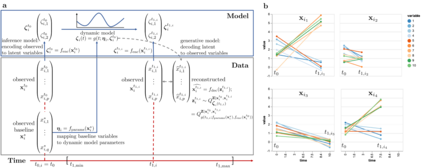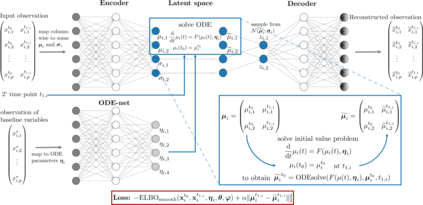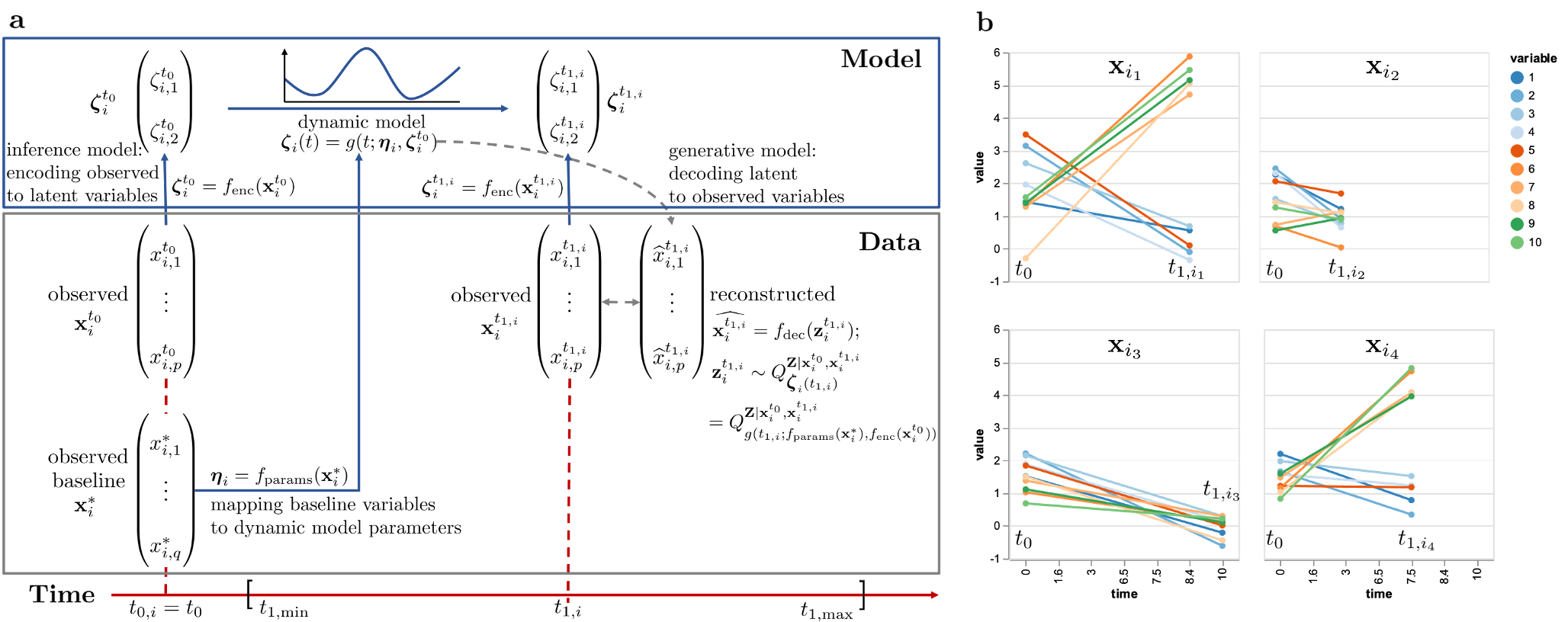Longitudinal biomedical data are often characterized by a sparse time grid and individual-specific development patterns. Specifically, in epidemiological cohort studies and clinical registries we are facing the question of what can be learned from the data in an early phase of the study, when only a baseline characterization and one follow-up measurement are available. Inspired by recent advances that allow to combine deep learning with dynamic modeling, we investigate whether such approaches can be useful for uncovering complex structure, in particular for an extreme small data setting with only two observations time points for each individual. Irregular spacing in time could then be used to gain more information on individual dynamics by leveraging similarity of individuals. We provide a brief overview of how variational autoencoders (VAEs), as a deep learning approach, can be linked to ordinary differential equations (ODEs) for dynamic modeling, and then specifically investigate the feasibility of such an approach that infers individual-specific latent trajectories by including regularity assumptions and individuals' similarity. We also provide a description of this deep learning approach as a filtering task to give a statistical perspective. Using simulated data, we show to what extent the approach can recover individual trajectories from ODE systems with two and four unknown parameters and infer groups of individuals with similar trajectories, and where it breaks down. The results show that such dynamic deep learning approaches can be useful even in extreme small data settings, but need to be carefully adapted.
翻译:具体地说,在流行病学组群研究和临床登记册中,我们正面临从研究早期阶段的数据中可以学到什么的问题,因为当时只有基线特征特征和一项后续衡量方法。受最近的进展的启发,这些进展能够将深层次学习与动态建模结合起来,我们调查这些方法是否可以有助于发现复杂的结构,特别是极小的数据设置,每个个人只有两个观察时间点。然后,利用个人的相似性,利用时间上的不固定间隔来获取关于个人动态的更多信息。我们简要概述如何在研究的早期阶段从数据中学习哪些东西,作为一种深层次的学习方法,可以与用于动态建模的普通差异方程式(ODs)相联系,然后具体调查这种方法的可行性,这种方法可以推断出个人特有的潜在轨迹,包括规律性假设和个人的相似性。我们还描述了这种深层次的学习方法,作为从统计角度的过滤工作。我们利用两个模拟数据,我们展示了如何将差异性自动化的自动化器(VAEE)与各种未知的参数联系起来。我们展示了在何种程度上可以将个人从动态系统中恢复到何种程度。







